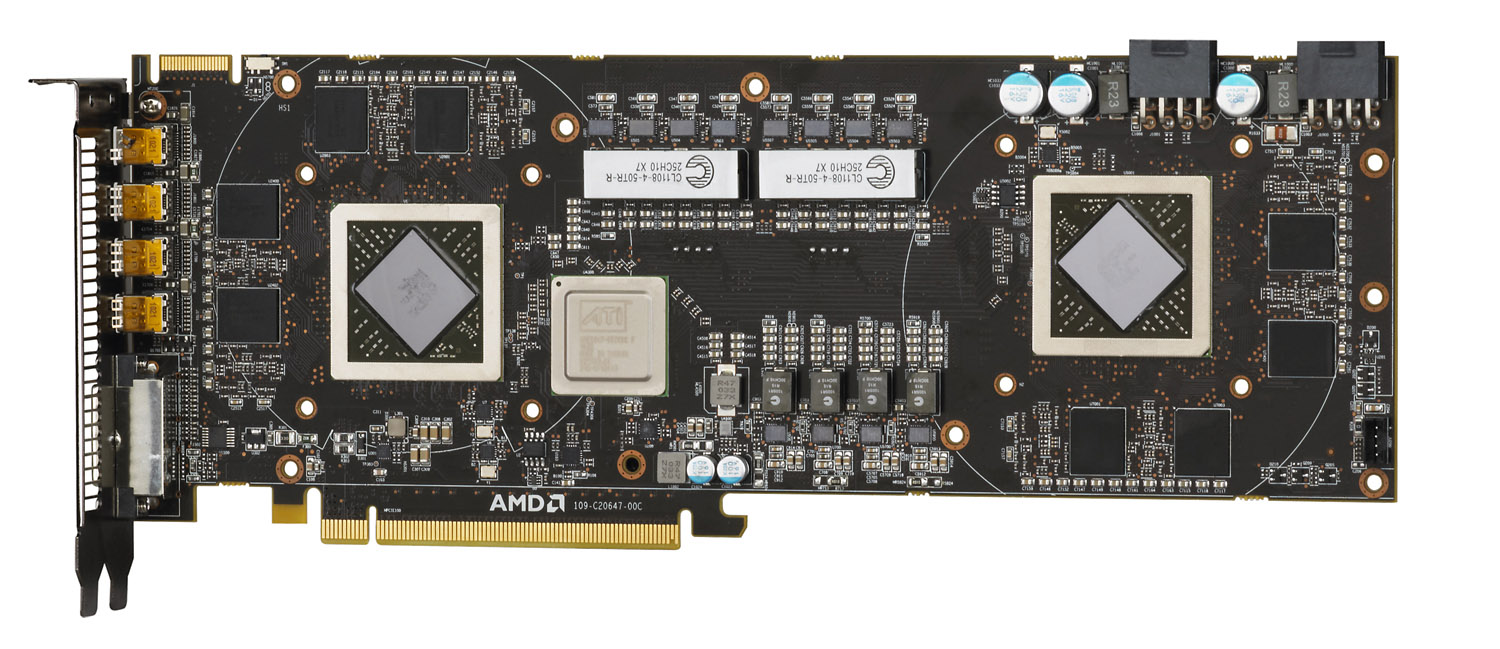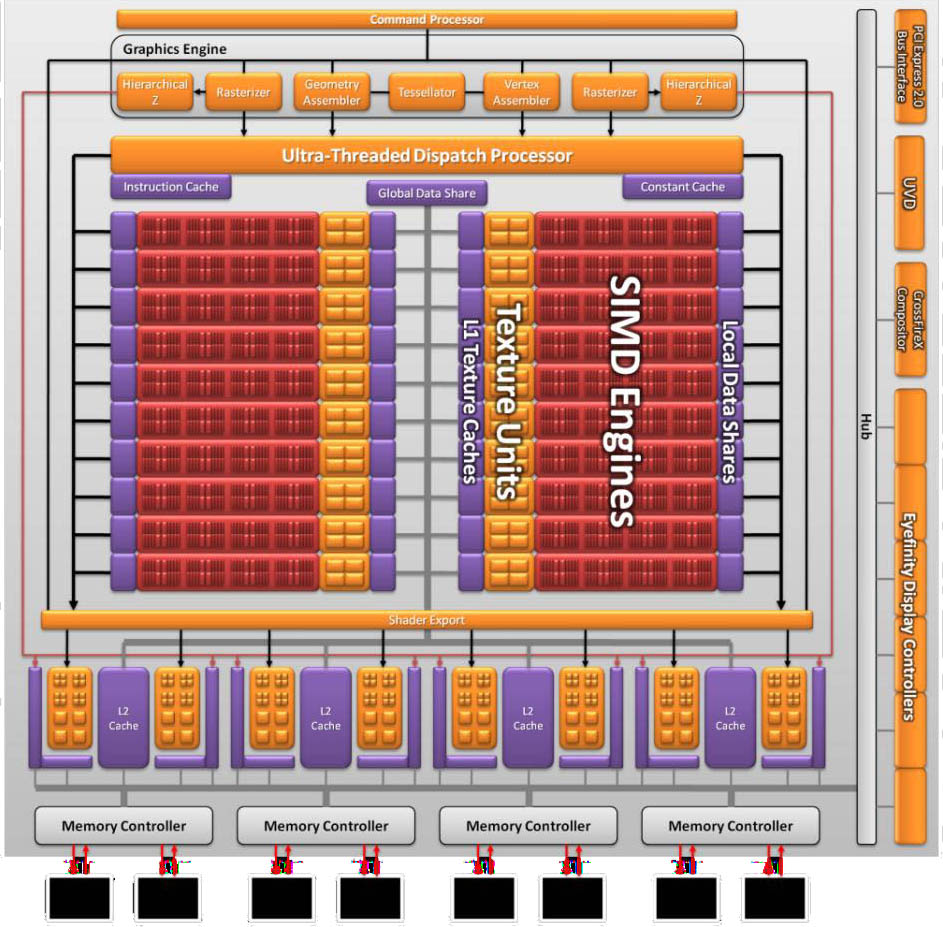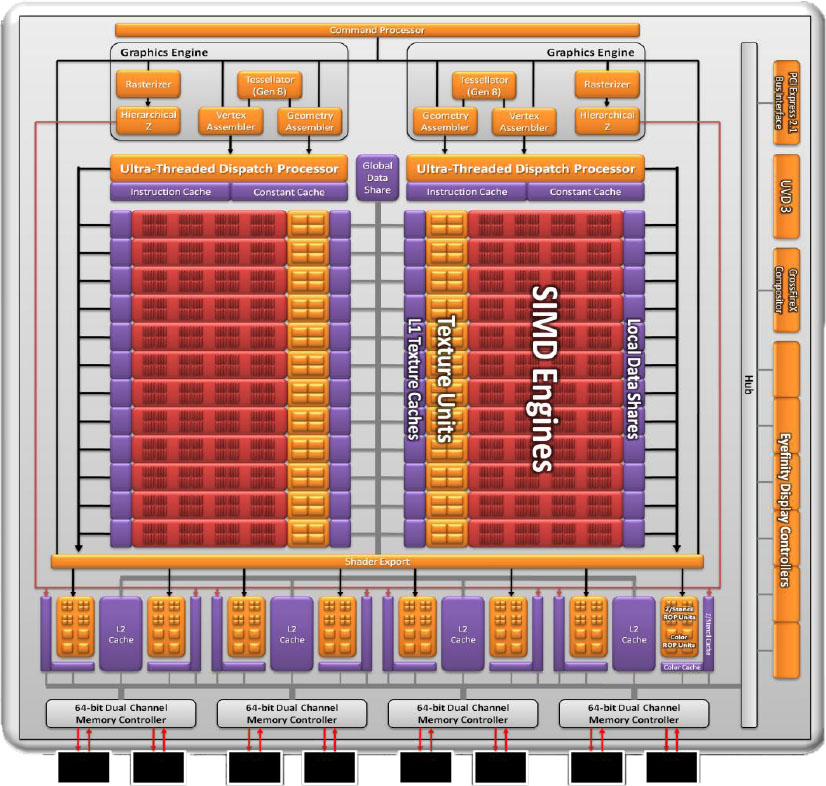AMD Radeon HD 6990 4 GB Review: Antilles Makes (Too Much) Noise
Several months late and supposedly only a couple of weeks ahead of Nvidia's own dual-GPU flagship launch, AMD's Radeon HD 6990 has no trouble establishing performance superiority. But does speed at any cost sacrifice too much of the user experience?
AMD’s Dual-Cayman Board Mashes The Gas
In drag racing, they say ‘a chase is a race.’ In other words, if you floor it and the guy next to you follows suit, that’s a race, and you’d better be prepared to pay up at the finish if it’s a money contest.
Both AMD and Nvidia have ridiculous dual-GPU hot rods they’ve been tweaking and tuning for months. Understandably, they want to stay secretive about their respective power plants. But neither one seems willing to mash the pedal and risk an embarrassing second-place finish. It’s a good thing that these two companies don’t live their lives a quarter-mile at a time. I can just see Vin, shaking his head in disappointment.
But come on already, guys! The AMD Radeon HD 6990 was supposed to be a 2010 model, and here we are in March wondering if AMD overpromised during its press briefing last October. We even heard rumors that the 6990 was canceled.
Au contraire, Pierre. It looks like AMD is making the first move with its blown Charger, daring Nvidia to throw-down with a twin sequential turbo-charged Supra...you probably know it as the rumored GeForce GTX 590. We received a single Radeon HD 6990 4 GB one week ago, beta drivers a couple of days later, and updated Catalyst Application Profiles a couple of days after that. Needless to say, the benchmarking marathon that went on in our Bakersfield, CA lab made the 24 Hours of Le Mans look like kart racing at an amusement park.
Meet Radeon HD 6990 4 GB
It just sounds majestic, doesn’t it? 6990. 4 GB. Unlike anything we’ve ever seen from AMD on the desktop. But don’t let naming trickery disarm you like the beautiful rosso corsa of Ferrari’s race cars.
The Radeon HD 6990 follows in the pedigree of Radeon HD 4870 X2 and Radeon HD 5970. It’s a dual-GPU card with graphics processors running, by default, at slightly reduced clock speeds compared to the company’s fastest single-chip board. Its 4 GB of memory are divided between both ASICs. So, you’re essentially looking at two 2 GB configurations on a single PCB, running in CrossFire.
Get Tom's Hardware's best news and in-depth reviews, straight to your inbox.
Although it was previously referred to by the code name Antilles, Radeon HD 6990 centers on two of the Cayman-based GPUs found in Radeon HD 6970 and 6950 graphics cards. If you remember from Radeon HD 6970 And 6950 Review: Is Cayman A Gator Or A Crock?, Cayman employs a slightly modified architecture, designed to extract more performance per square millimeter of die space. There are situations where this VLIW4 architecture could underperform AMD's older VLIW5 design, but the company says those situations are rare.
Bottom line: the highest-end Cayman configuration offers fewer ALUs than the most complex Cypress processor (found in the Radeon HD 5800-series cards). However, Cayman’s ALUs are more capable. For a deeper background on Cayman’s architecture, check the second page of our launch coverage.
Each Cayman GPU serves up 1536 ALUs spread across 24 SIMDs. SIMDs are tied to four texture units, totaling 96. Radeon HD 6990 utilizes Cayman in its uncut form, so you get 3072 ALUs and 192 texture units between the pair of GPUs. As mentioned, the 4 GB frame buffer is divided up, 2 GB of GDDR5 per processor, connected via a 256-bit bus.
AMD unifies the two Cayman GPUs using the exact same 48-lane PCI Express 2.0 switch from PLX found on the Radeon HD 5970. Sixteen of those lanes serve the slot interface, 16 go to GPU 1, and 16 go to GPU 2.
| Header Cell - Column 0 | Radeon HD 6990 | Radeon HD 6970 | Radeon HD 6950 | GeForce GTX 580 |
|---|---|---|---|---|
| Manufacturing Process | 40 nm TSMC | 40 nm TSMC | 40 nm TSMC | 40 nm TSMC |
| Die Size | 2 x 389 mm² | 389 mm² | 389 mm² | 520 mm² |
| Transistors | 2 x 2.64 billion | 2.64 billion | 2.64 billion | 3 billion |
| Engine Clock | 830 MHz | 880 MHz | 800 MHz | 772 MHz |
| Stream Processors / CUDA Cores | 3072 | 1536 | 1408 | 512 |
| Compute Performance | 5.1 TFLOPS | 2.7 TFLOPS | 2.25 TFLOPS | 1.58 TFLOPS |
| Texture Units | 192 | 96 | 88 | 64 |
| Texture Fillrate | 159.4 Gtex/s | 84.5 Gtex/s | 70.4 Gtex/s | 49.4 Gtex/s |
| ROPs | 64 | 32 | 32 | 48 |
| Pixel Fillrate | 53.1 Gpix/s | 28.2 Gpix/s | 25.6 Gpix/s | 37.1 Gpix/s |
| Frame Buffer | 4 GB GDDR5 | 2 GB GDDR5 | 2 GB GDDR5 | 1.5 GB GDDR5 |
| Memory Clock | 1250 MHz | 1375 MHz | 1250 MHz | 1002 MHz |
| Memory Bandwidth | 2 x 160 GB/s (256-bit) | 176 GB/s (256-bit) | 160 GB/s (256-bit) | 192 GB/s (384-bit) |
| Maximum Board Power | 375 W | 250 W | 200 W | 244 W |
Of course, we’re ecstatic that AMD is using fully-functional 40 nm Cayman GPUs—the kind you’d find on a Radeon HD 6970. But that product is already rated for up to 250 W maximum board power. Keeping the 6990’s thermal output manageable meant turning down the clocks from 880 MHz (Radeon HD 6970) to 830 MHz (Radeon HD 6990). AMD also uses a lower memory clock (1250 MHz rather than 1375 MHz). The resulting compute power adds up to 5.1 TFLOPS of single-precision math or 1.27 TFLOPS double-precision.
But AMD also arms this card with a couple of surprises that "break the rules" in the name of more muscle.
Current page: AMD’s Dual-Cayman Board Mashes The Gas
Next Page Radeon HD 6990: Power, Cooling, And Size--All Extreme-
CrazeEAdrian Great job AMD. You need to expect noise and heat when dealing with a card that beasts out that kind of performance, it's part of the territory.Reply -
jprahman This thing is a monster, 375W TDP, 4GB of VRAM! Some people don't even have 4GB of regular RAM in their systems, let alone on their video card.Reply -
one-shot Did I miss the load power draw? I just noticed the idle and noise ratings. It would be informative to see the power draw of Crossfire 6990s and overclocked i7. I see the graph, but a chart with CPU only and GPU only followed by a combination of both would be nice to see.Reply -
anacandor For the people that actually buy this card, i'm sure they'll be able to afford an aftermarket cooler for this thing once they come out...Reply -
cangelini one-shotDid I miss the load power draw? I just noticed the idle and noise ratings. It would be informative to see the power draw of Crossfire 6990s and overclocked i7. I see the graph, but a chart with CPU only and GPU only followed by a combination of both would be nice to see.Reply
We don't have two cards here to test, unfortunately. The logged load results for a single card are on the same page, though! -
bombat1994 things we need to see are this thing water cooled.Reply
and tested at 7680 x 1600
that will see just how well it does.
That thing is an absolute monster of a card.
They really should have made it 32nm. then the power draw would have fallen below 300w and the thing would be cooler.
STILL NICE WORK AMD -
Bigmac80 Pretty fast i wonder if this will be cheaper then 2 GTX 570's or 2 6950's?Reply
But omg this thing is freakin loud. What's the point of having a quite system now with Noctua fans :(



